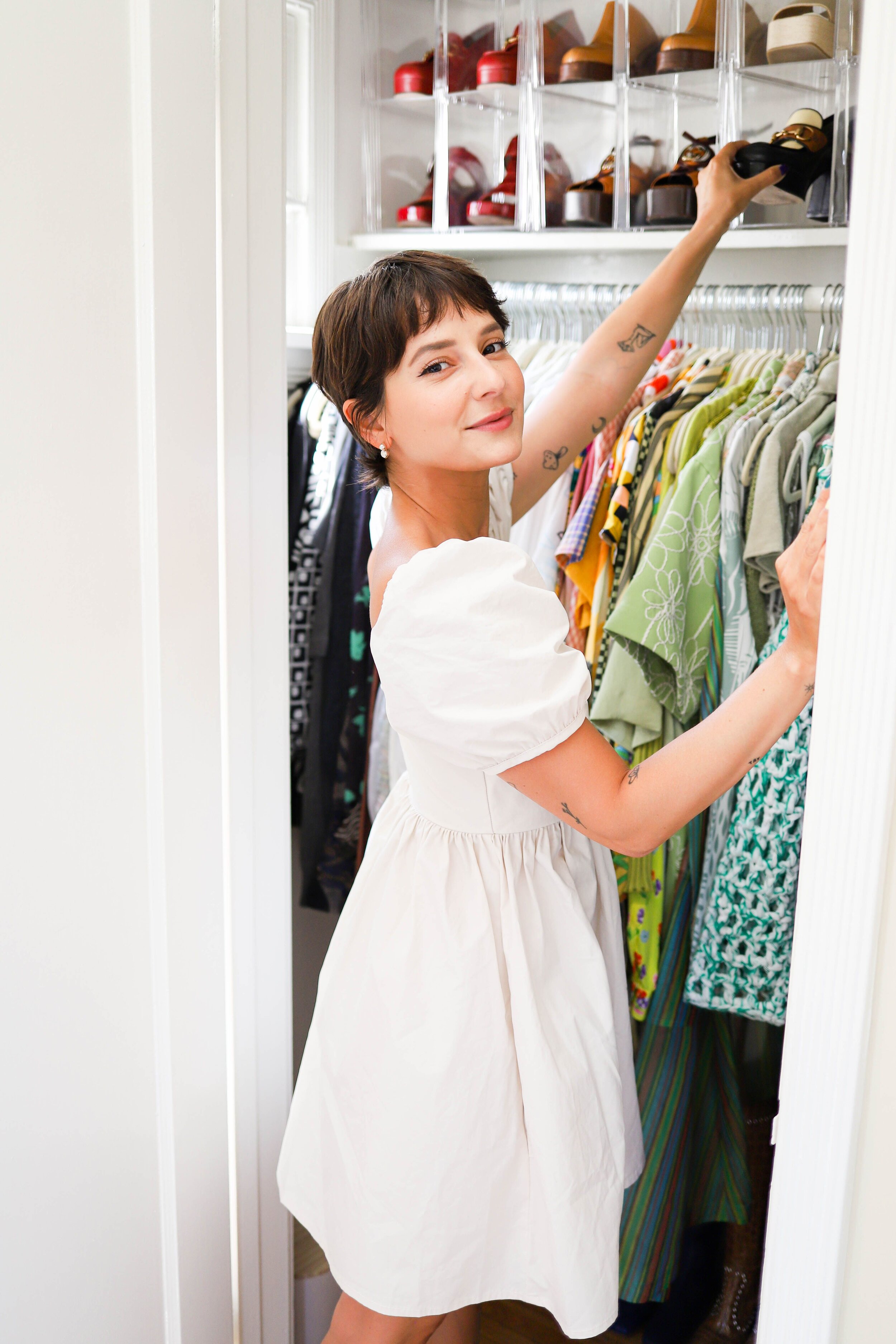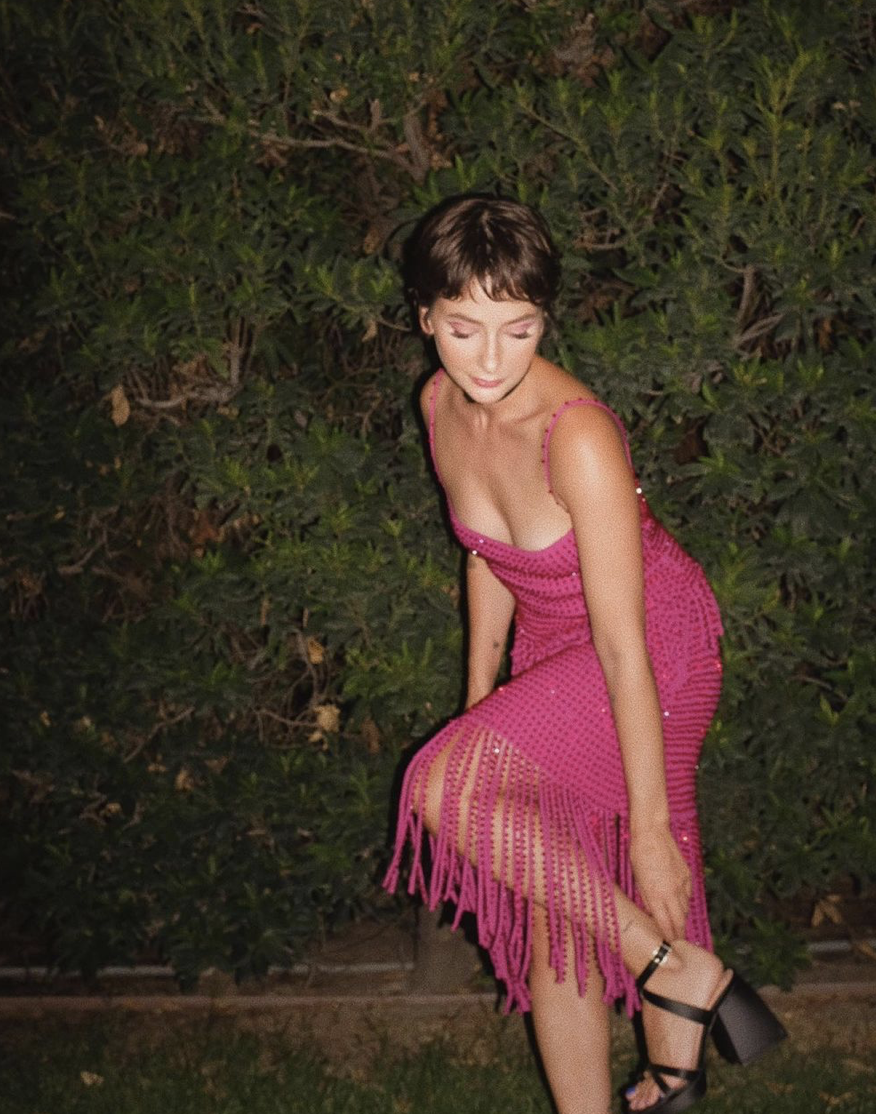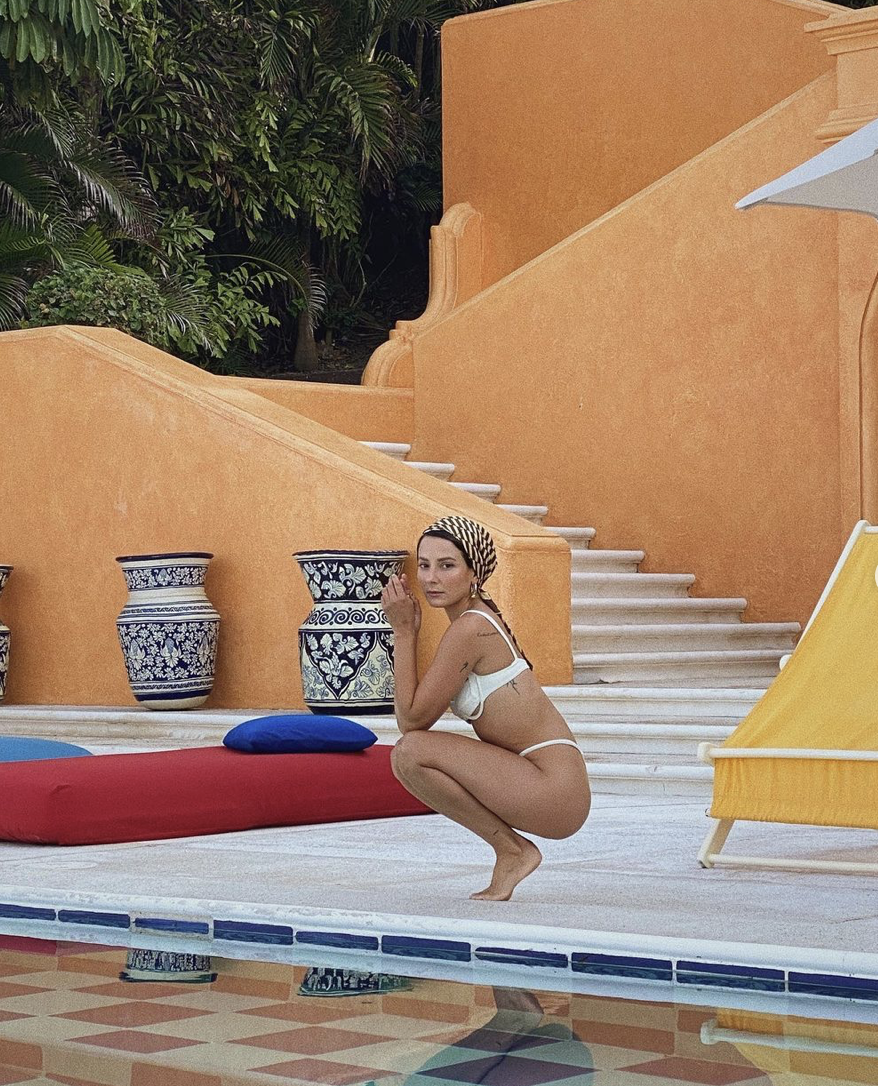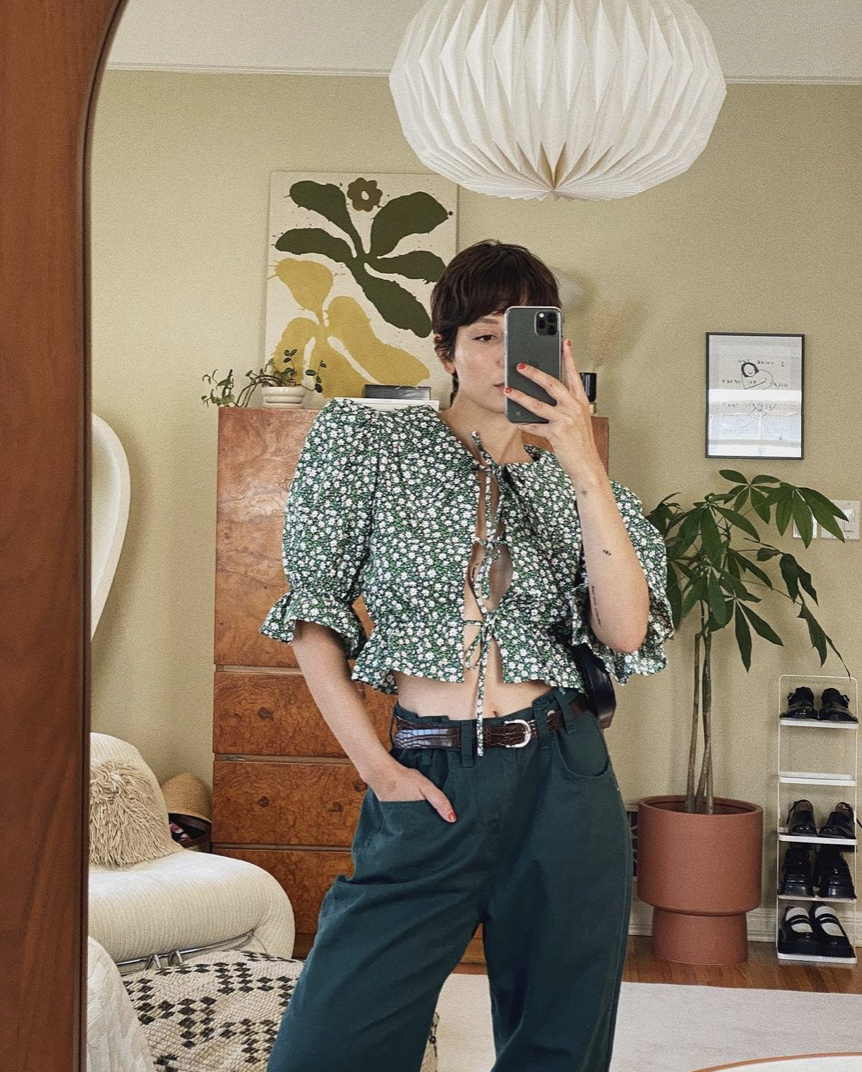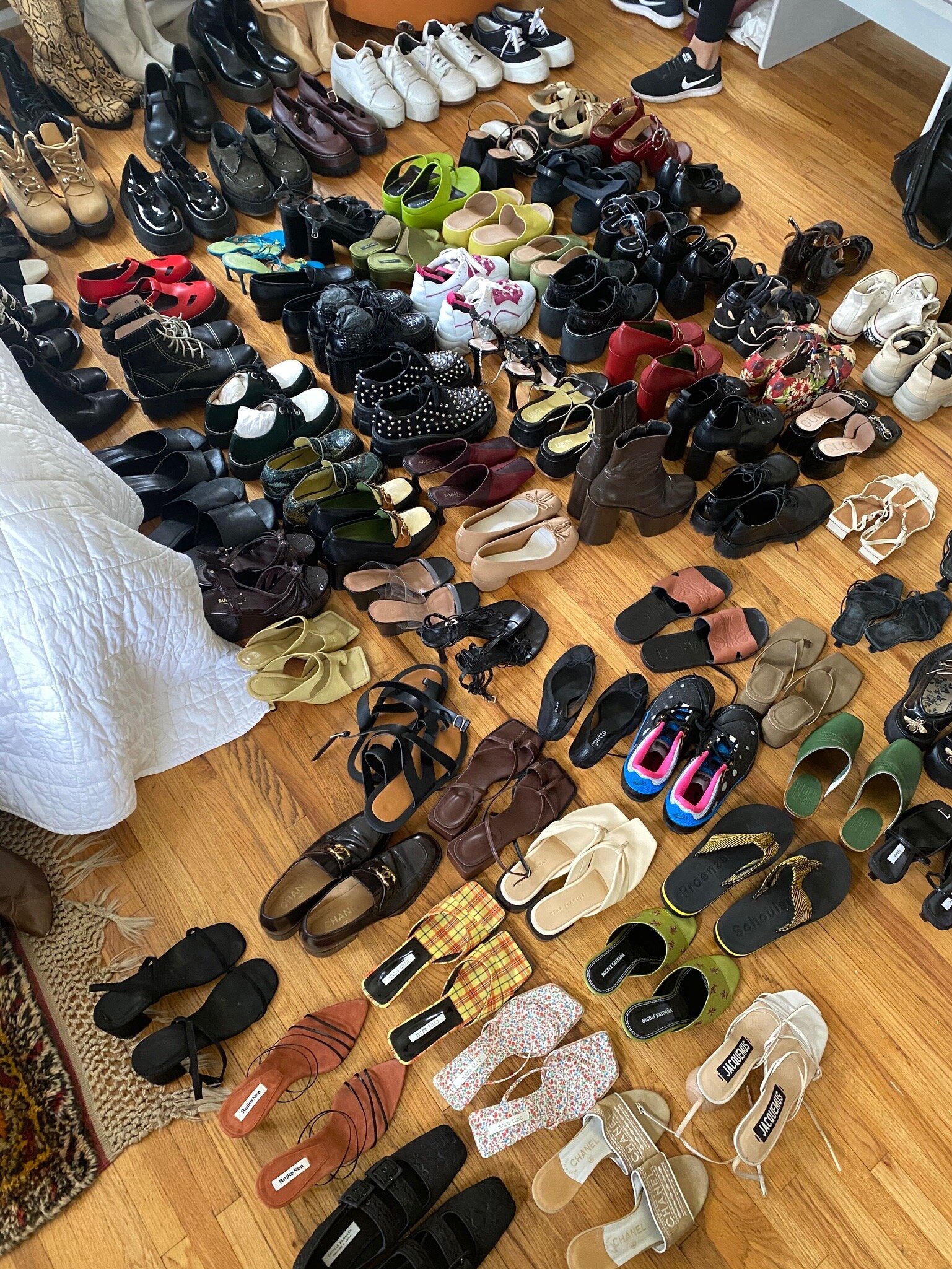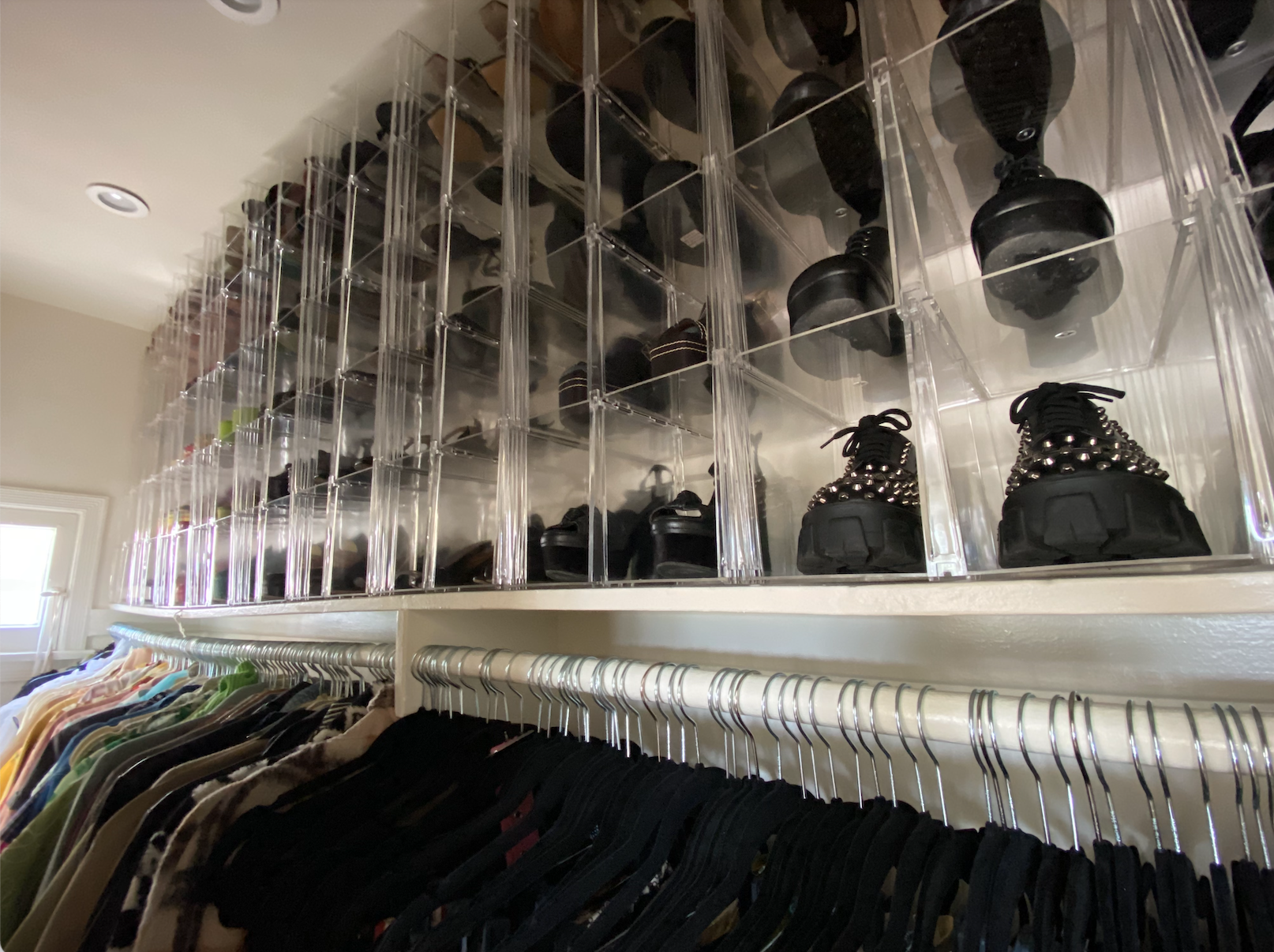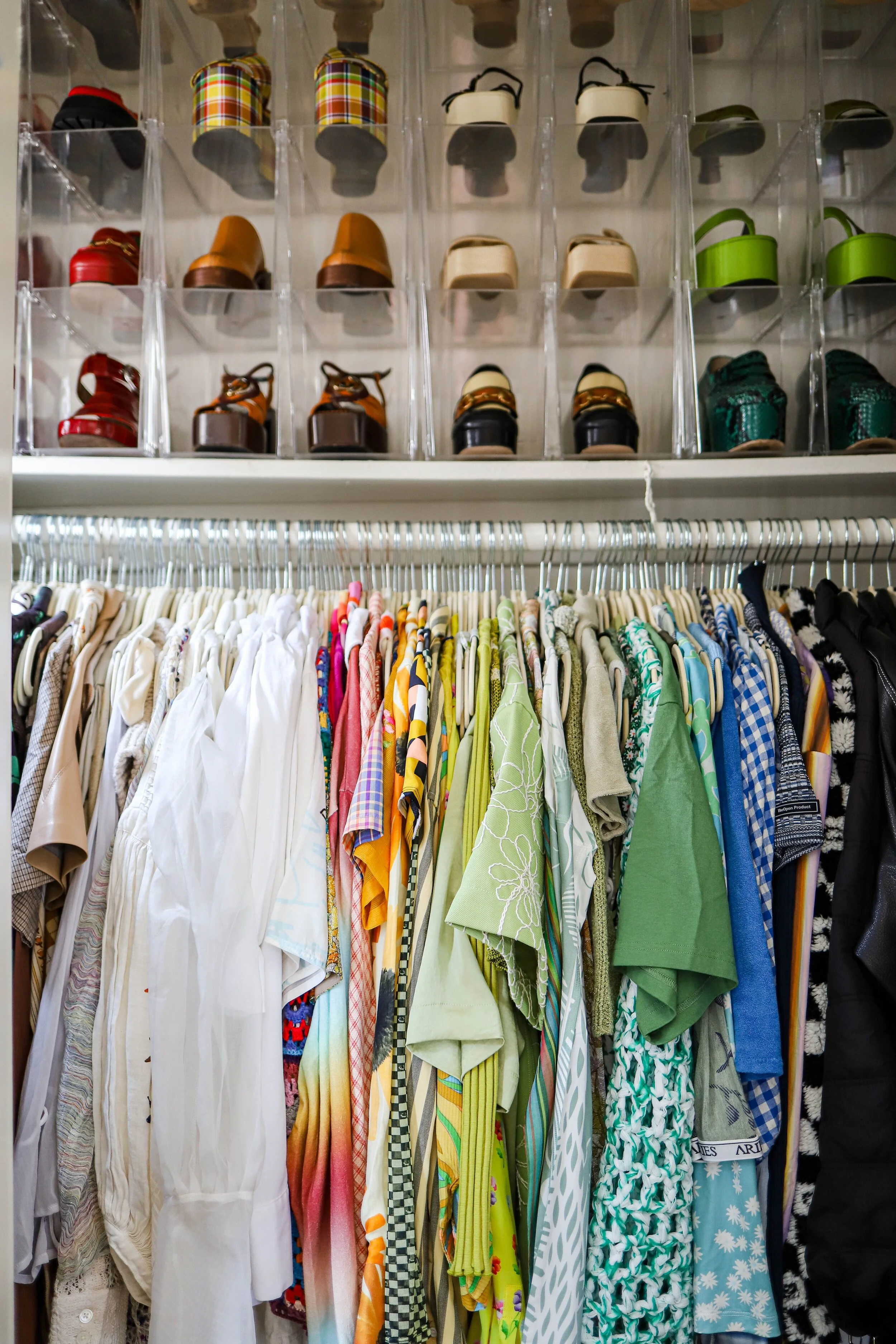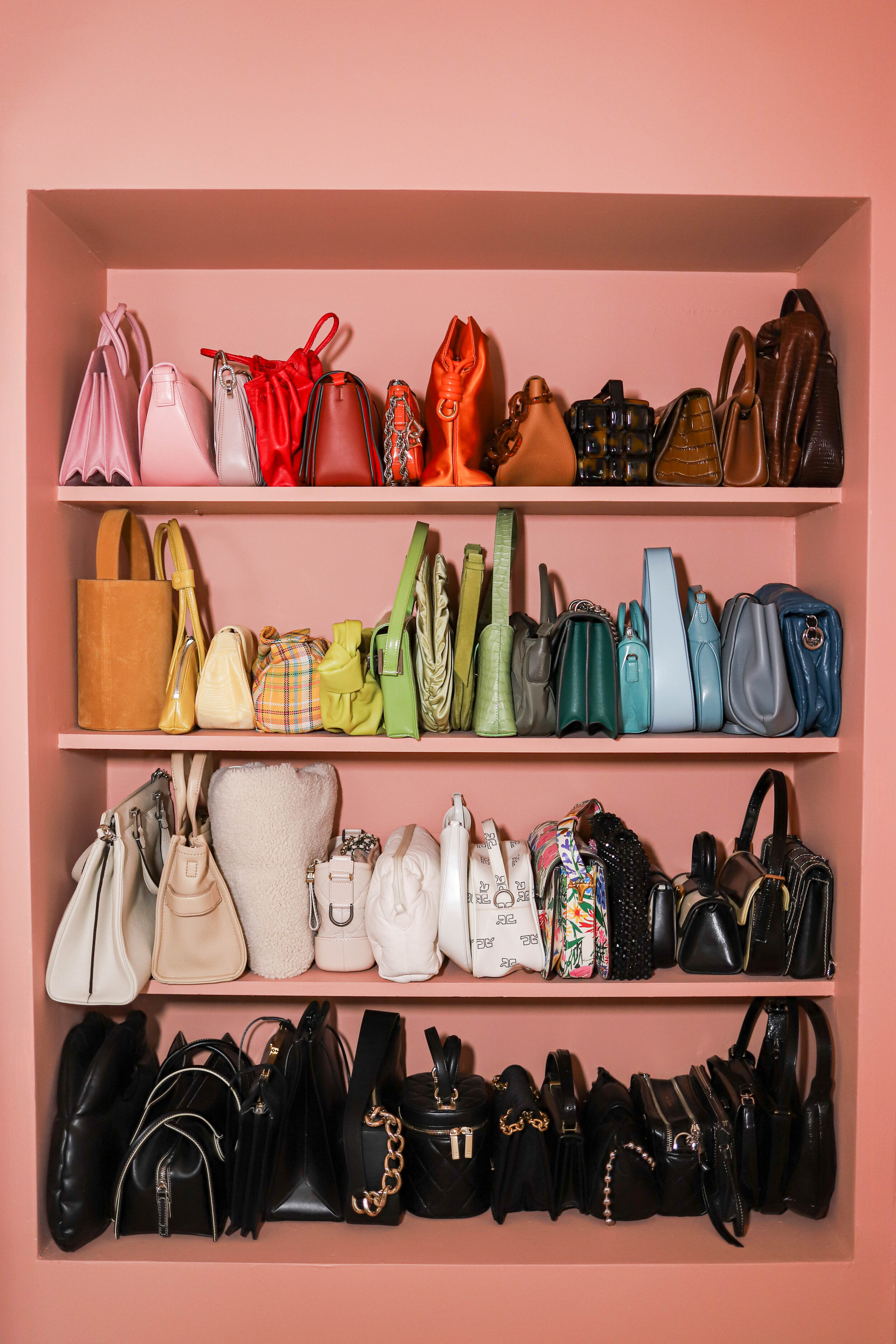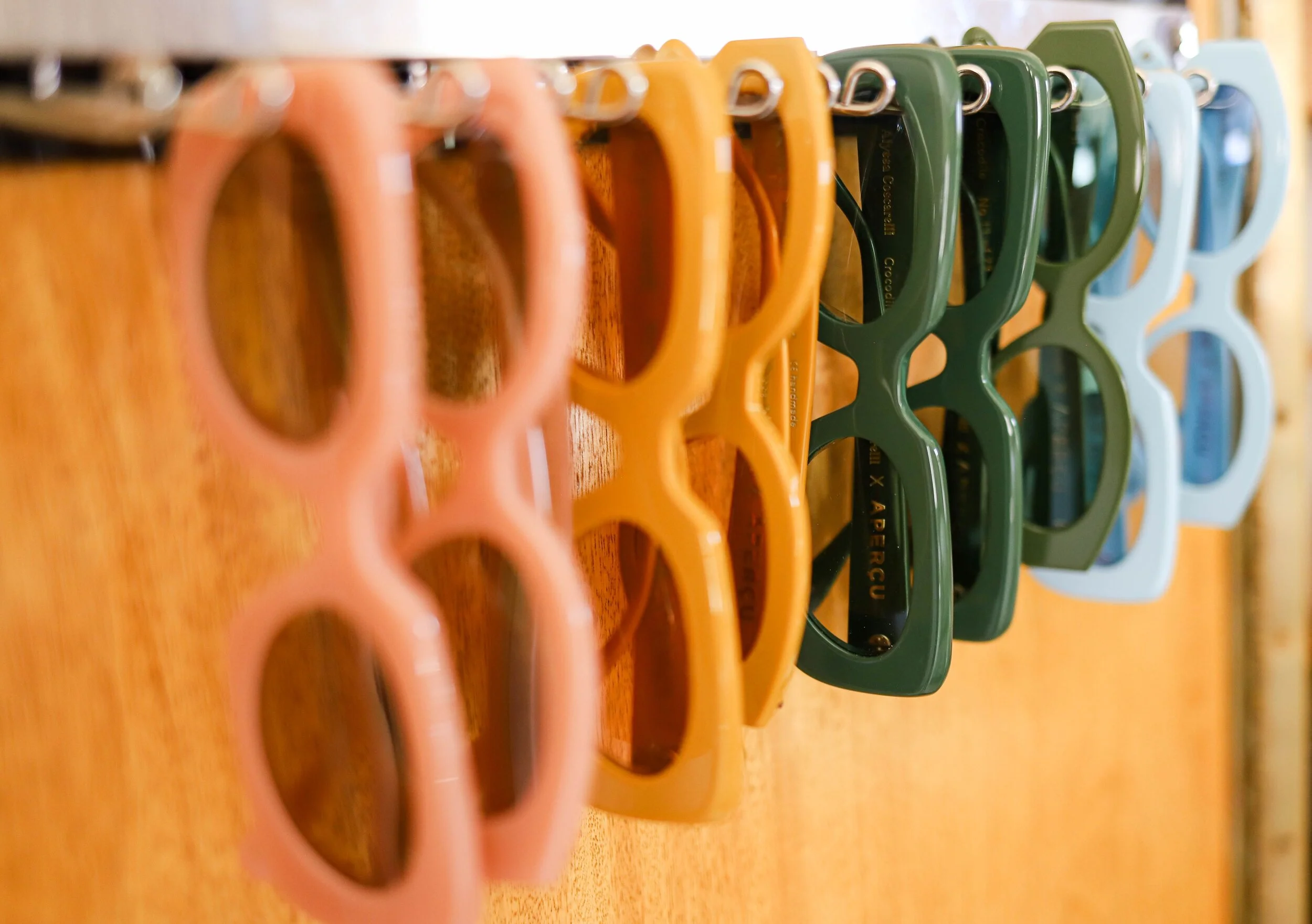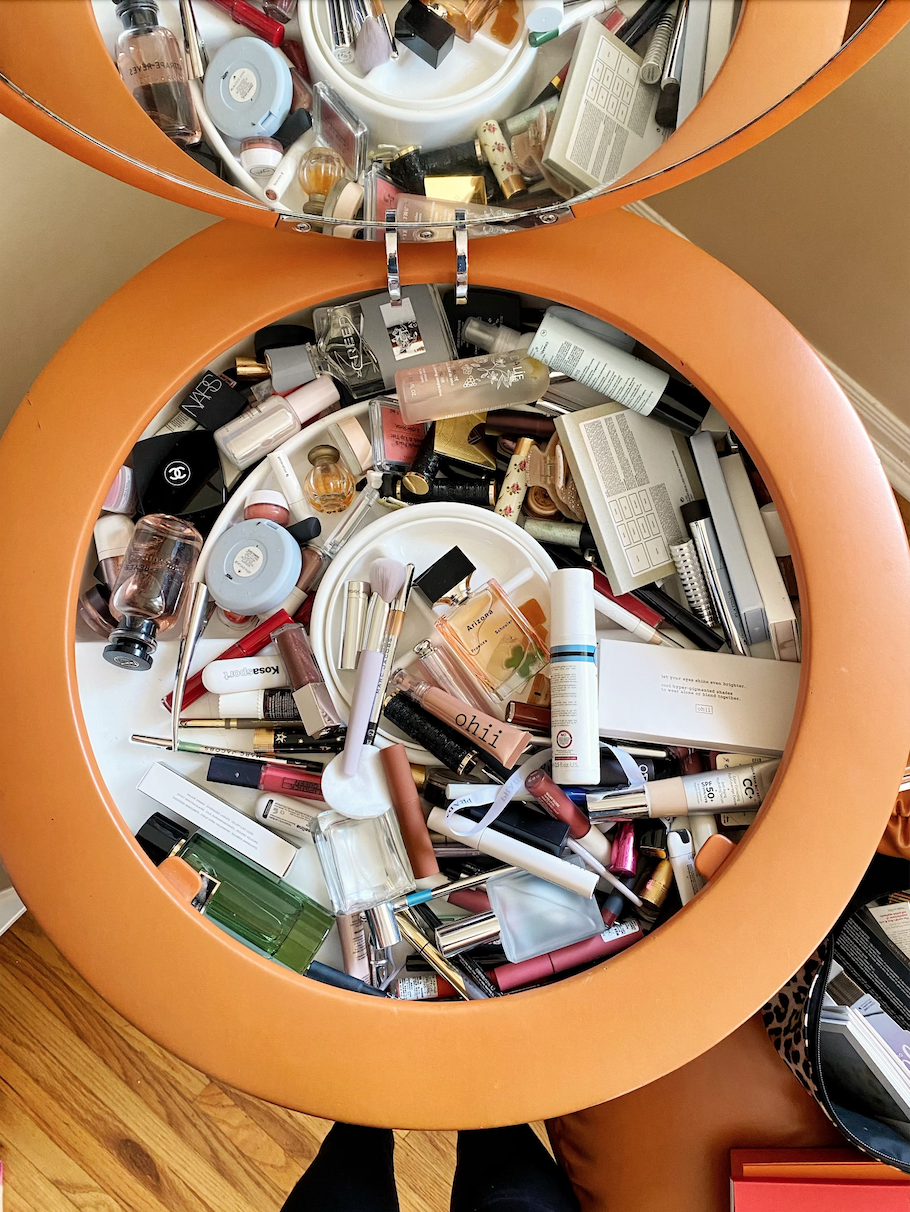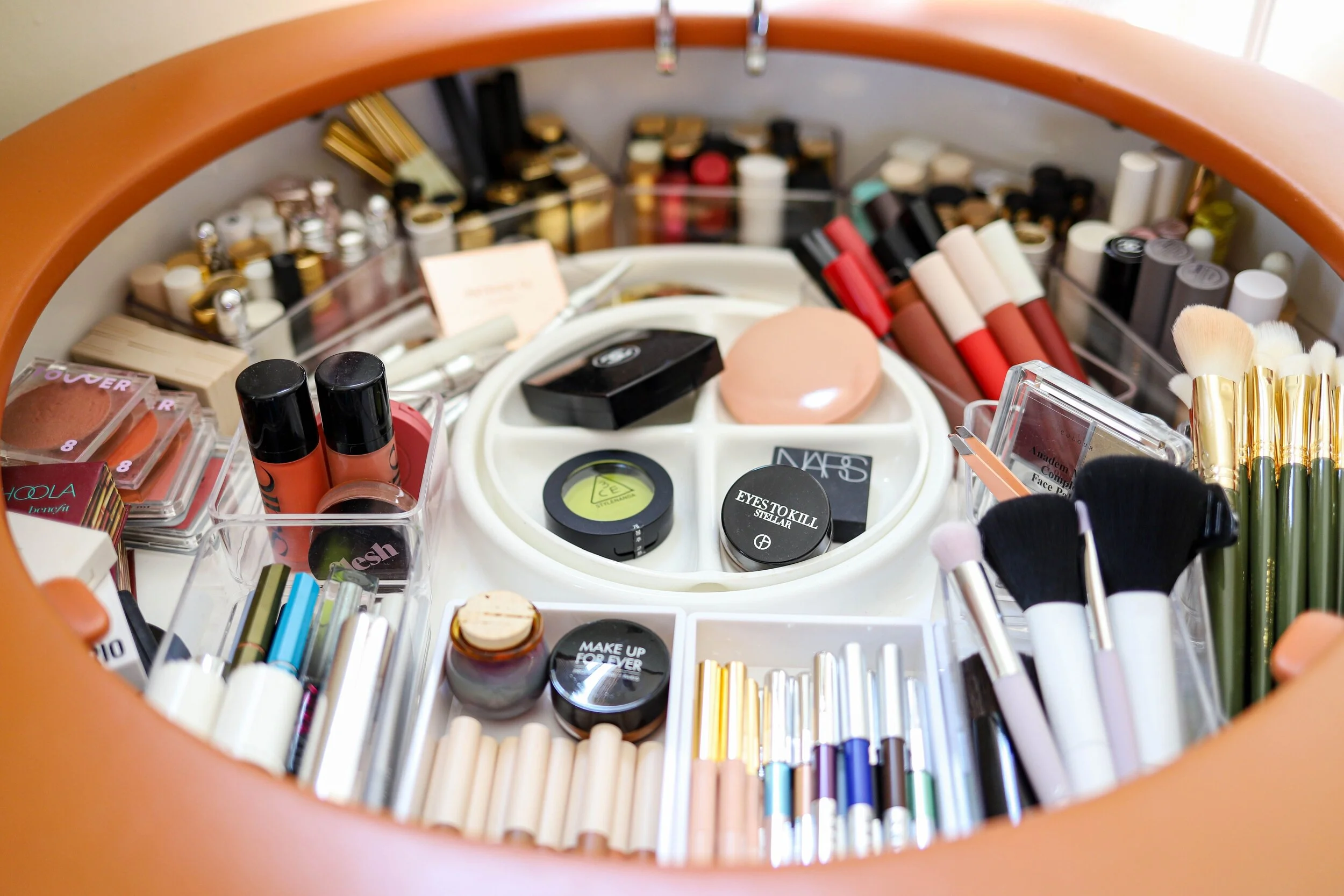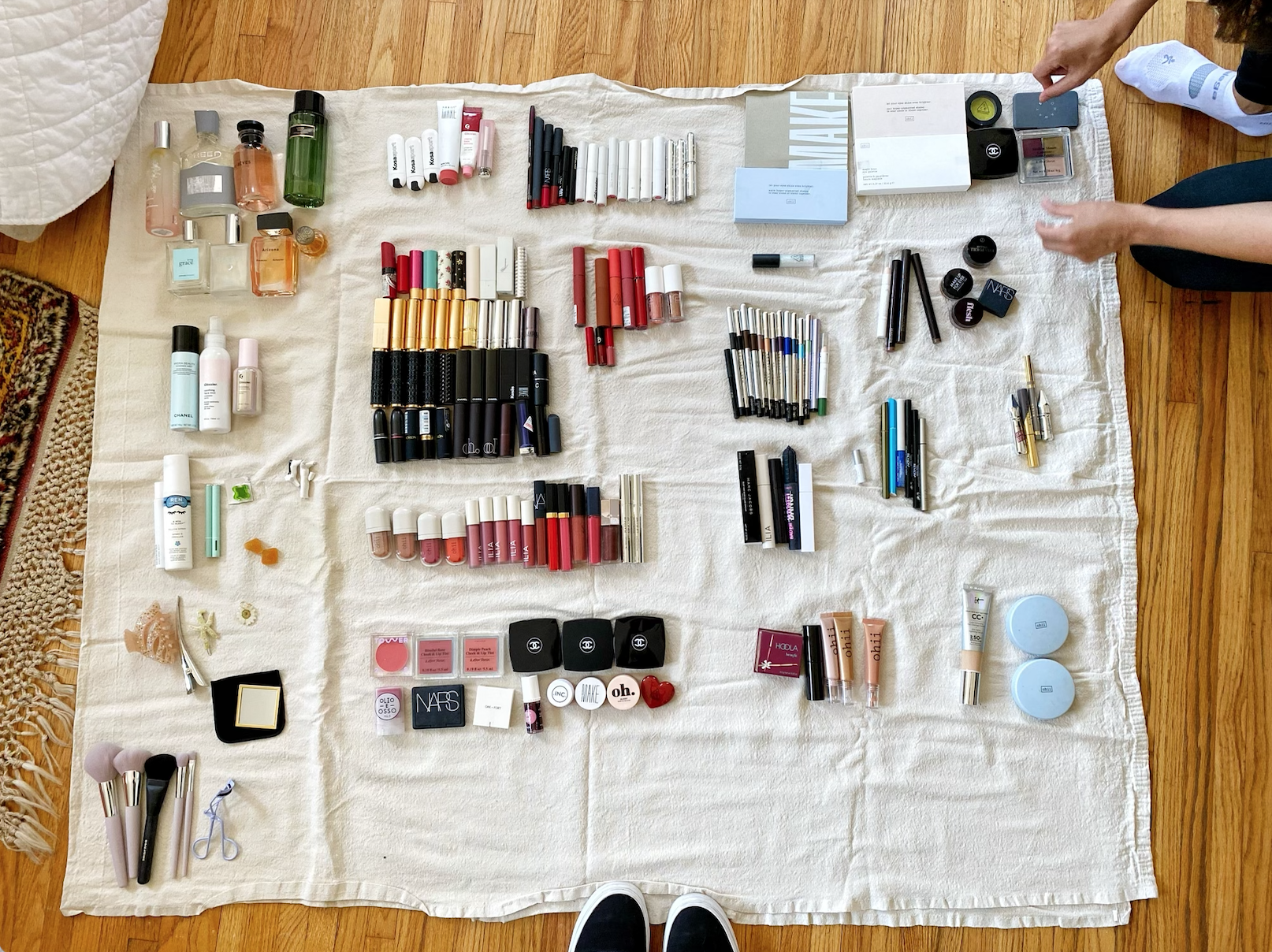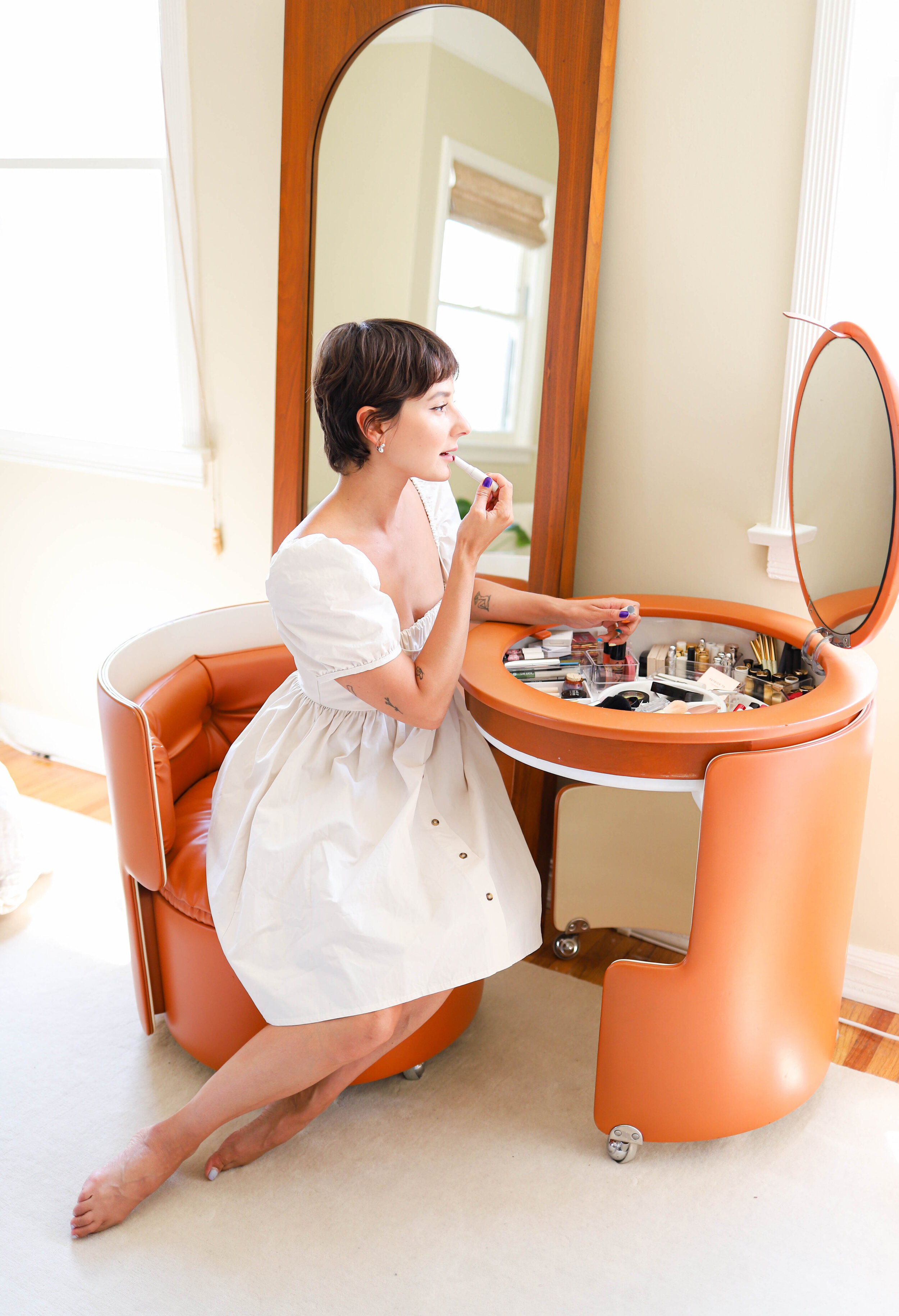A Closet Edit with Alyssa Coscarelli
Alyssa Coscarelli is a lot of things: fashion writer, sunglasses designer, creative consultant (to name a few). But to me, her most defining characteristic is her creativity and how it translates into her signature style. She builds effortless outfits from the most incongruous pieces, and she’s personally inspired me to step outside of my usual jeans/t-shirt/dress box. But while Alyssa may be a mage when it comes to putting together outfits, the clothes don’t appear out of thin air. Sourcing, collecting, and wearing clothing is her job, and while she has a unique ability for accumulating a lot of it, she’s also left with the complicated task of figuring out how to store everything.
I have a theory about organization and creative people: they see the potential in everything, so it’s hard for them to let go of anything. I see it with chefs, makeup artists, film directors, writers...and I see it with Alyssa. Every time she tries to let go of something, her brain pings her, “but what if you need it for _______!” And her brain is right, in a sense. She probably could create an incredible outfit out of any number of random pieces in her closet. But unless she also has a way to add on to her living space at the same rate she’s accumulating new products, there’s no practical way to keep every single thing that sparks joy.
In my years of experience organizing for creatives, I’ve learned that free space is more valuable than keeping too much stuff. And this is certainly the case with Alyssa. She moved into her Los Angeles apartment in the summer of 2020 and quickly filled her closet to the brim. We organized for her that summer, creating a ceiling-high shoe library and adding some modern containment to her 1968 Dilly Dally vanity, and we left her with a tidy closet full of systems but not much room to grow. Now, over a year later, she’s bursting at the seams, so we’ve returned to help her pare down again and refresh her space.
Alyssa and I talk about what works for her,
“I’m someone who really needs to see my things or else I completely will not remember them, so that’s it’s own challenge too, because you want things to look nice and organized, but you also want to be able to see them and remember what you have.”
Thankfully, with the right systems and a little creativity, she can have both.
Step 1: Pare Down
Alyssa’s clothes are packed so tightly into the closet that it’s hard to get hangers out, so our first goal is to choose things to part with and reclaim some much-needed breathing room. There are some obvious pieces that Alyssa knows she’s ready to let go of, but after a fast start, our progress slows as choices begin to get more difficult. Clothes are so intricately connected to our identities, it can feel like we’re letting go of our past, or even future, selves when we part with them. We take every single item out of the closet so Alyssa can see them all together and the decision-making becomes easier. “It’s hard because you look at it and think, ‘I really used to love this, and now it’s really just not for my lifestyle or who I am now.’ Letting go of that is hard, but then it feels amazing.” Here, the pandemic factors in too. We’ve all changed significantly in the past year and a half, and what worked for us before 2020 might not be the best option anymore. “It’s already hard enough to be socializing again, you don’t need to be making it more complicated with a strapless dress that doesn’t fit right, or jeans that are too tight and cutting into your ribs.”
Step 2: Donate or Sell
Making tough decisions about what to keep and what to part with is certainly a huge leap forward, but then there’s the problem of what to do with everything you’re parting with. Do you take it to a Goodwill and hope everything doesn’t end up in a trash pile somewhere? What if there was a better way? Part of Alyssa’s success in parting with her clothing is that she has a solid plan of what to do with everything once it leaves her home: some items get resold at the RealReal, some are taken to local Los Angeles vintage shops where they’ll easily find new homes (and a lucky shopper can pick them up well below sticker price), and some are donated to a local Los Angeles shelter (any unopened beauty and skincare products go there as well). She also hosts a closet sale a few times a year, donating proceeds to organizations like Planned Parenthood, the ACLU, and Structure, which creates sustainable housing in communities affected by natural disasters and climate change. Knowing that her things will find happy new owners is a win-win for Alyssa, it relieves any guilt she might have about parting with them and it benefits the community.
Step 3: Create Functional Systems
Once Alyssa is pared down to a realistic amount of clothes, shoes, and accessories for her space, we get creative. Our goal is to use every square inch of available space, and to pair items with storage areas that are appropriately-sized for them. For example, Alyssa had been storing sweaters in a drawer, but she can’t fit that many in without it getting overloaded, so we move the sweaters to a big shelf and use that drawer to fit her exercise gear instead.
The height of Alyssa’s closet presents us with a ton of wasted space. Because her apartment is a rental, we choose to build a shoe library using modular stacking bins that reach up to the ceiling, but don’t require attaching anything to the walls. The shoe library creates useful structure for nearly all of Alyssa's shoes and she can even bring the bins with her to future homes. We prioritize the shoes she wears the most near the bottom for easy reachability, then store shoes she only wears occasionally up high (with a stepstool stowed within easy reach).
We also (very happily) get our hands on her vintage 1968 Dilly Dally vanity. With its cute built-in compartments it seems easy to keep organized, but it actually needs a bit more containment to keep categories together and small items in place. Some simple clear drawer dividers do the trick, and now it’s easy for Alyssa to do her makeup in the morning.
Lastly, there are purses (a lot of them!). As a rule, we like to keep purses and bags out in the open when possible. The less you can see something the less likely it is to get used, so displaying items like purses and accessories means they’ll actually serve a purpose versus getting forgotten about for ages. Alyssa thankfully has a built-in bookshelf to spare and it’s the perfect home for her rainbow of bags.
Step 4: Maintain It
Although organizing your closet might feel like magic, in order to keep that magic alive, it requires maintenance. Some people live by the “one in, one out rule,” but I like a more relaxed approach. I encourage Alyssa to remember how good she feels now that things are organized, and to get into the habit of donating and selling extra items more regularly. Organizing into systems also creates natural boundaries, so if she finds that she doesn’t have an extra slot to put a new pair of shoes, it’s probably time to make some room by paring down.
At the end of the day, we love creating beautiful spaces for our friends and clients, but it’s the ripple effect of feeling good that keeps us in business. “I really do feel so much more inspired now that you guys have been here the last few days because I can really see what I have. I feel like I have room to breathe and create in a way that I was struggling with before.” And when Alyssa feels creative, we all benefit from it.

